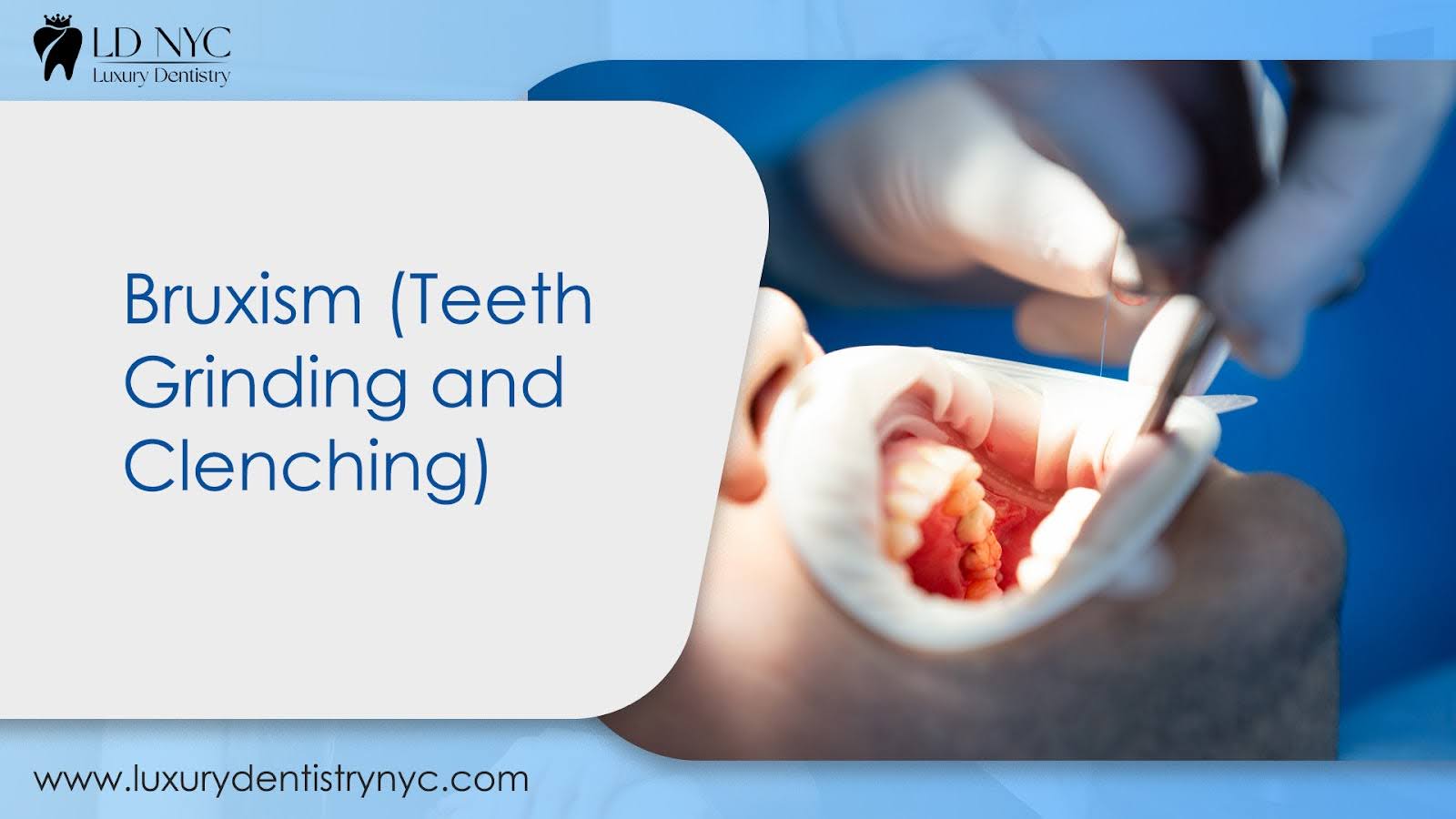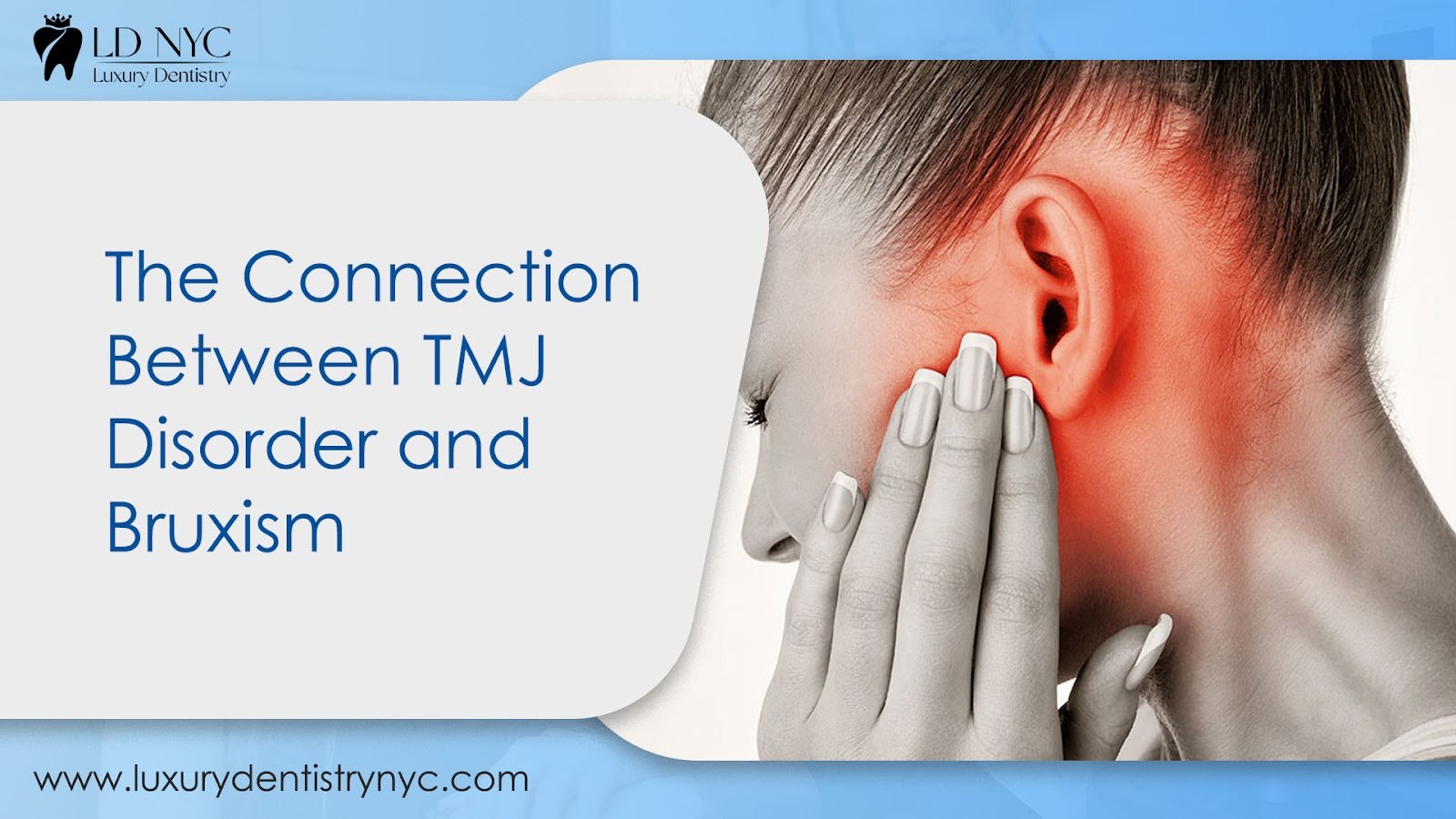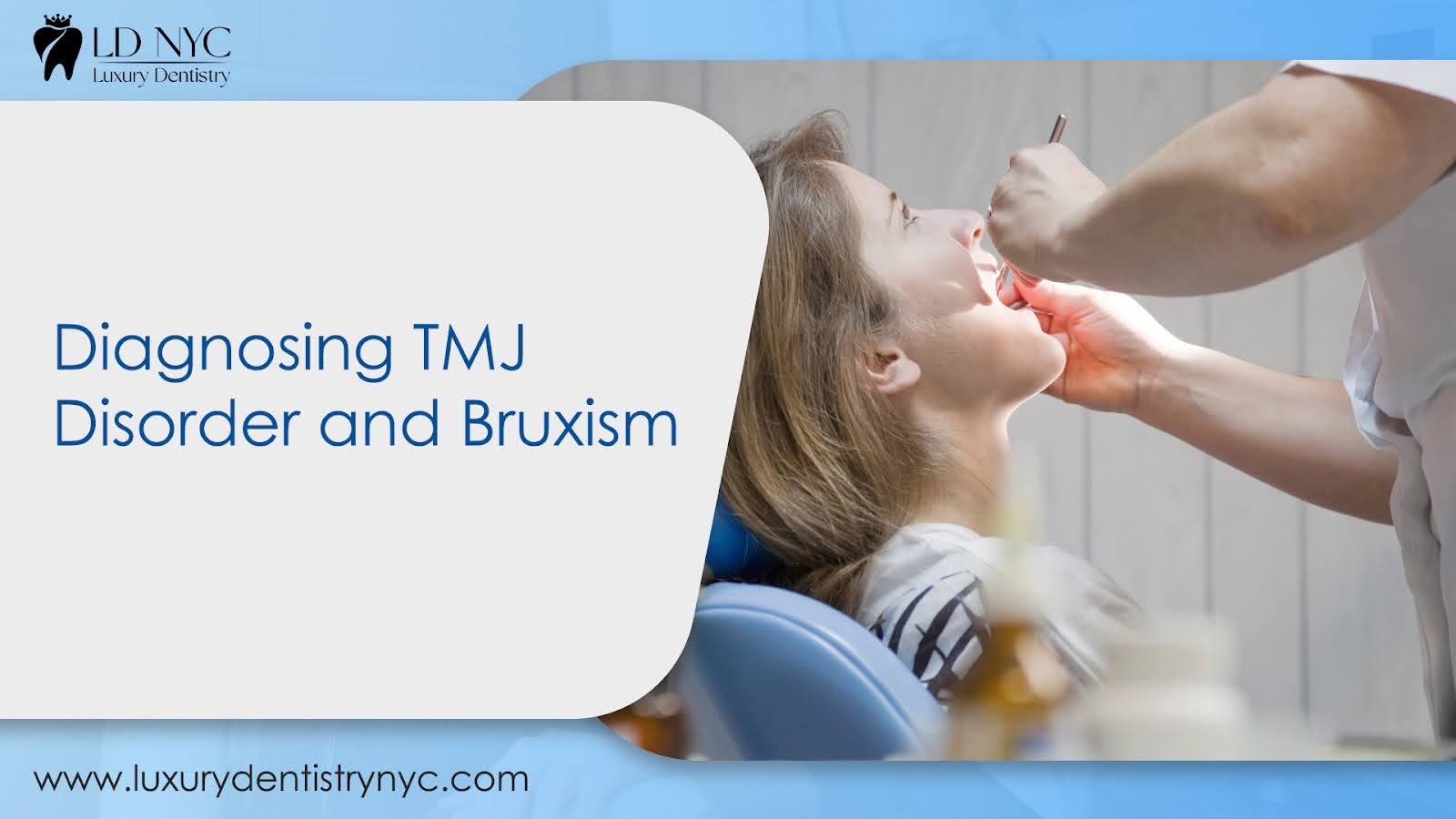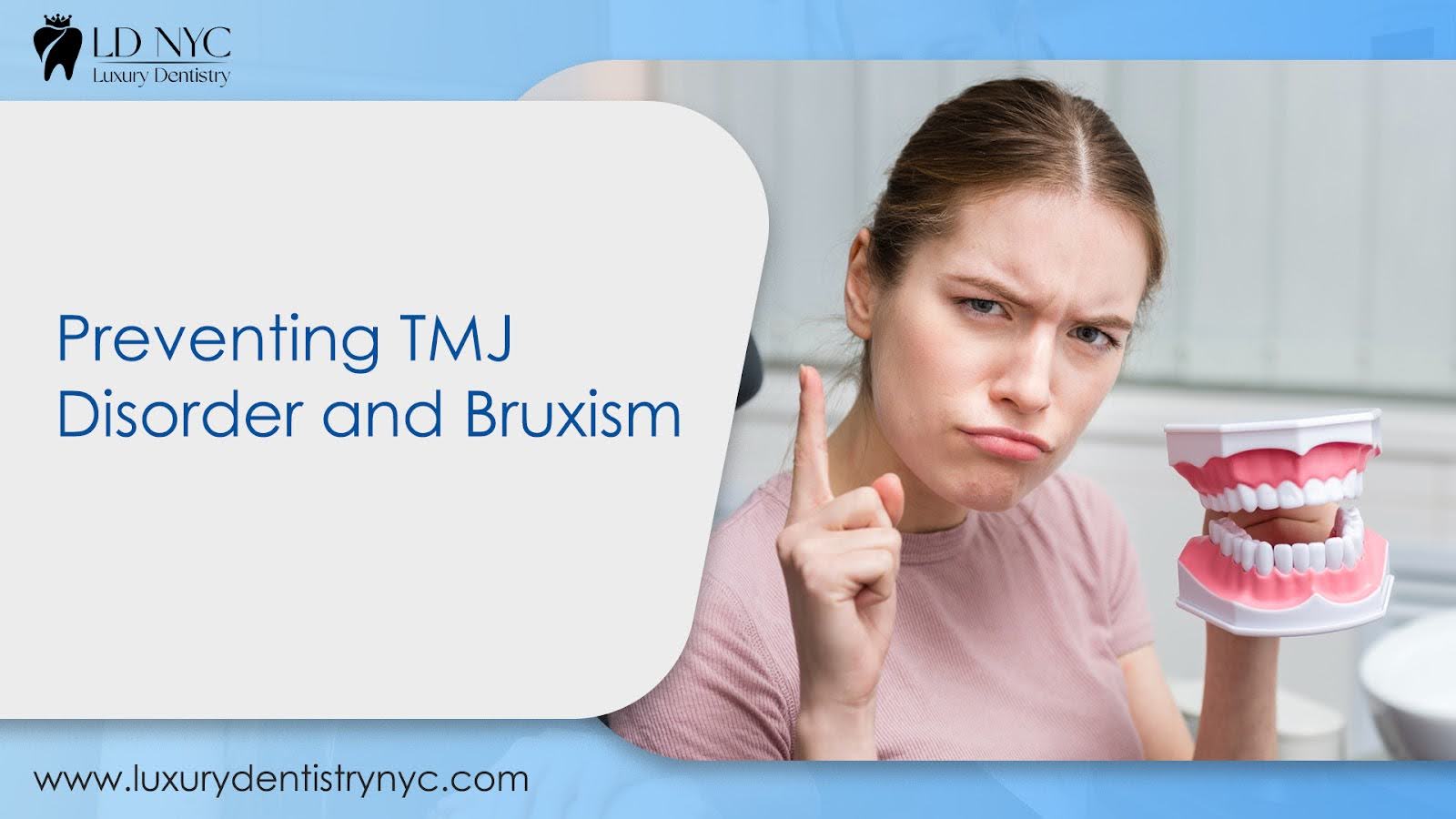TMJ disorder and bruxism are both conditions that affect the jaw and dental health. Understanding the relationship between these two disorders is essential to provide appropriate treatment and improve overall well-being. This article explores the definitions, symptoms, causes, diagnostic methods, treatment options, and prevention strategies related to TMJ disorder and bruxism, shedding light on their interconnected nature. If you’re in search of a knowledgeable dentist in NYC, the insights provided here aim to guide you in recognizing, managing, and preventing these conditions, ultimately contributing to improved oral health and overall wellness
Table of Contents
ToggleUnderstanding TMJ Disorder and Bruxism
TMJ disorder and bruxism are distinct yet interconnected conditions that affect the jaw, teeth, and overall oral health.

TMJ Disorder (Temporomandibular Joint Disorder)
TMJ disorder refers to a condition affecting the temporomandibular joint, which connects the jaw to the skull. Understanding the causes, symptoms, and diagnosis of TMJ disorder is crucial to addressing its impact on jaw health.
Defining TMJ Disorder: Causes, Symptoms, and Diagnosis
TMJ disorder arises from various causes, such as trauma, imbalanced dental treatments, and grinding. Recognizing its symptoms and obtaining a timely diagnosis is key to managing the condition effectively.
Understanding the Impact of TMJ Disorder on Jaw Health
TMJ disorder affects jaw movement, causing discomfort, pain, and limitations in daily activities. Understanding its implications on jaw health is vital for devising appropriate treatment plans.

Bruxism (Teeth Grinding and Clenching)
Bruxism is characterized by the unconscious clenching of the jaw or grinding of teeth. Exploring the causes, signs, and dental health implications of bruxism is essential for effective management.
Exploring Bruxism: Causes, Signs, and Diagnosis
Stress, genetics, and certain medical conditions can trigger bruxism. Identifying signs of bruxism and obtaining a proper diagnosis are fundamental steps in addressing the condition.
How Bruxism Affects Dental Health and Jaw Function
Bruxism can cause dental issues like tooth wear, fractures, and increased sensitivity. Understanding its effects on dental health and jaw function is vital to preventing further damage.

The Connection Between TMJ Disorder and Bruxism
They share common symptoms and can be interconnected, impacting each other’s progression and severity.
The Overlapping Symptoms
Both of them present similar symptoms, such as pain, discomfort, and dysfunction, making it challenging to differentiate between the two.
Examining Shared Symptoms: Pain, Discomfort, and Dysfunction
Understanding the symptoms that both TMJ disorder and bruxism share helps in accurate diagnosis and subsequent treatment planning.
How TMJ Disorder and Bruxism Can Mask Each Other
Due to the similarities in symptoms, TMJ disorder and bruxism can be misdiagnosed or misinterpreted, delaying appropriate treatment.
The Cause-and-Effect Relationship
Bruxism can contribute to the development or exacerbation of TMJ disorder, showcasing the complex cause-and-effect relationship between these conditions.
Understanding How Bruxism Can Contribute to TMJ Disorder
The habitual teeth grinding associated with bruxism can strain the temporomandibular joint, potentially leading to the onset or aggravation of TMJ disorder.
Reciprocation: How TMJ Disorder Can Trigger Bruxism
Pain and discomfort from TMJ disorder can trigger or worsen bruxism, forming a cycle of reciprocal influence between the two conditions.

Diagnosing TMJ Disorder and Bruxism
Accurate diagnosis is the cornerstone for effective management and treatment of TMJ disorder and bruxism.
Professional Diagnosis
Seeking a diagnosis from a dentist or specialist is crucial for accurately identifying TMJ disorder or bruxism and devising an appropriate treatment plan.
The Role of Imaging and Dental Examinations
Diagnostic tools like imaging and dental examinations play a significant role in confirming and understanding the extent of TMJ disorder and bruxism.
Treatment Options
Various treatment approaches can effectively manage TMJ disorder and bruxism, aiming to alleviate pain and discomfort while improving jaw function and dental health.
Managing TMJ Disorder and Bruxism
Lifestyle changes and self-care practices, along with dental interventions like mouthguards and splints, are essential components of the treatment plan for TMJ disorder and bruxism.
Conservative Approaches: Lifestyle Changes and Self-Care
Incorporating lifestyle modifications and self-care practices can significantly contribute to managing TMJ disorder and bruxism effectively.
Dental Interventions: Mouthguards, Splints, and Orthodontic Solutions
Dental interventions, such as using mouthguards, splints, or orthodontic solutions, can aid in managing the symptoms and preventing further damage caused by TMJ disorder and bruxism.
Addressing Pain and Discomfort
Effective pain management strategies and appropriate medications or therapies can help alleviate the discomfort associated with TMJ disorder and bruxism.
Pain Management Strategies for TMJ Disorder and Bruxism
Understanding and implementing pain management strategies are crucial for enhancing the quality of life for individuals affected by TMJ disorder and bruxism.
Medications and Therapies to Alleviate Symptoms
Certain medications and therapies can be employed to alleviate symptoms and enhance the overall well-being of individuals suffering from TMJ disorder and bruxism.

Preventing TMJ Disorder and Bruxism
Prevention strategies focus on adopting healthy habits and prioritizing good oral health to reduce the risk of developing TMJ disorder and bruxism.
Lifestyle Modifications
Implementing healthy habits, stress management techniques, and making positive lifestyle changes can significantly reduce the risk of developing TMJ disorder and bruxism.
Implementing Healthy Habits to Reduce the Risk
Simple lifestyle changes can play a pivotal role in preventing TMJ disorder and bruxism. Creating a conducive environment for relaxation and stress reduction is essential.
Stress Management Techniques and Their Impact
Stress management is crucial in preventing bruxism, emphasizing the need for implementing stress-reduction techniques in daily life.
Dental Care Practices
Regular dental checkups, good oral hygiene practices, and early detection of potential issues can aid in preventing TMJ disorder and bruxism.
Promoting Good Oral Health to Combat Bruxism
Maintaining good oral hygiene is key to preventing dental issues, including bruxism. Routine brushing, flossing, and regular dental checkups are paramount.
Regular Dental Checkups: Early Detection and Prevention
Regular dental checkups enable early detection of signs of bruxism or TMJ disorder, facilitating timely intervention and prevention.
Conclusion
The relationship between TMJ disorder and bruxism is intricate and can have a significant impact on an individual’s quality of life. Recognizing the signs, understanding their connection, obtaining a proper diagnosis, and exploring effective treatment options are essential steps in managing these conditions. By promoting good oral health, adopting stress management techniques, and seeking timely dental care, individuals can empower themselves to recognize, manage, and prevent TMJ disorder and bruxism, ultimately leading to improved overall well-being.
Experience jaw pain or teeth grinding? Prioritize oral health with Dr. D at Luxury Dentistry NYC. Our team offers personalized care for TMJ disorder and bruxism. Take the first step to a healthier smile. Contact us now for a consultation and let Dr. D be your partner in optimal oral health. A bright, healthy smile awaits – call today!

Dr. Steven Davidowitz, also known as “Dr. D” by his patients, is one of the Upper East Side of NYC Manhattan’s leading cosmetic dentists that specialize in designing and maintaining beautiful smiles.











